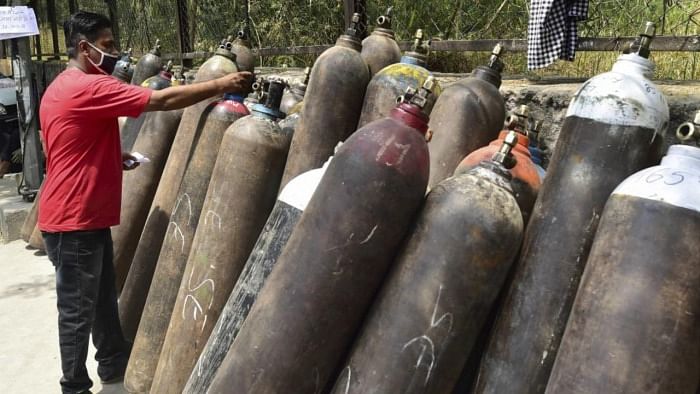
As early as March 24, the Critical Care Support Unit (CCSU) had categorised Chamarajanagar district hospital in red saying, “O2 shortage, O2 pressure is low. Receiving 25 oxygen cylinders per day though requirement is 300 cylinders per day.”
Despite CCSU red flagging that the hospital is in dire straits with respect to oxygen, 41 days before May 2, when 24 lives were snuffed out due to alleged oxygen shortage, adequate measures weren’t taken to avert the disaster.
Even in the CCSU report for May 6, Chamarajanagar is in orange saying the oxygen pressure at the hospital is low. So is the case at the Hassan district hospital.
The CCSU, a team of intensive care experts from private and government super speciality hospitals in the state which was set up last year during the first wave of the pandemic, does tele-ICU rounds every morning in all the 30 district hospitals.
The tele-ICU rounds start with taking stock of oxygen in tertiary care hospitals of the district, essential Covid drugs, number of ICU beds and ventilators available with the hospitals.
They categorise the hospitals as red (if the situation is dire), orange (if there is a shortage) and green (if there are no shortage issues).
Chamarajanagar Deputy Commissioner M R Ravi and District Health Officer M C Ravi did not respond to calls and queries from DH.
6,000L tank
Health Commissioner Dr Trilok Chandra, who also heads the CCSU, said, “It was after this (CCSU’s) alert that the capacity was increased significantly by installing a 6,000-litre liquid medical oxygen tank. Earlier, they were running on cylinders only. Cylinders were supposed to act as a buffer. It is not that the CCSU’s alert was unheeded.”
Boosting of infra on
On CCSU’s alert on various districts exhausting intensive care unit beds, Chandra said, “In other districts also (like Bengaluru), they’re ramping up facilities. This is happening across all districts. Wherever additional ventilators have been requested, we have been giving them. These are ventilators from all categories like those from PM Cares and those procured by the Health department.”
Asked for specifics on how many ICU beds are likely to be added once the ramp up of infrastructure is undertaken, he did not reveal details.
Mandya District Health Officer Dr Manche Gowda said they had received 25 ventilators, but finding human resource (HR) is a challenge.
“We can use 40 ventilators in the medical college hospital and the rest in taluk hospitals. Our 30 ICU beds in the medical college hospital are full, so are 18 in all taluk hospitals. Even if we get the machines, we need HR and doctors,” he said.
